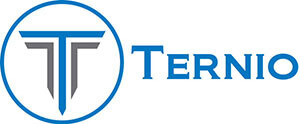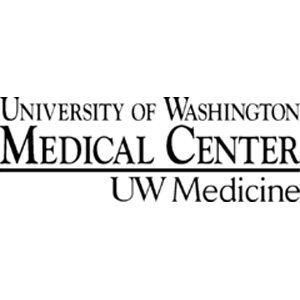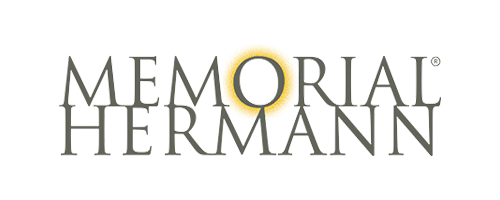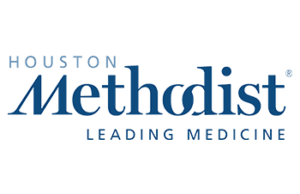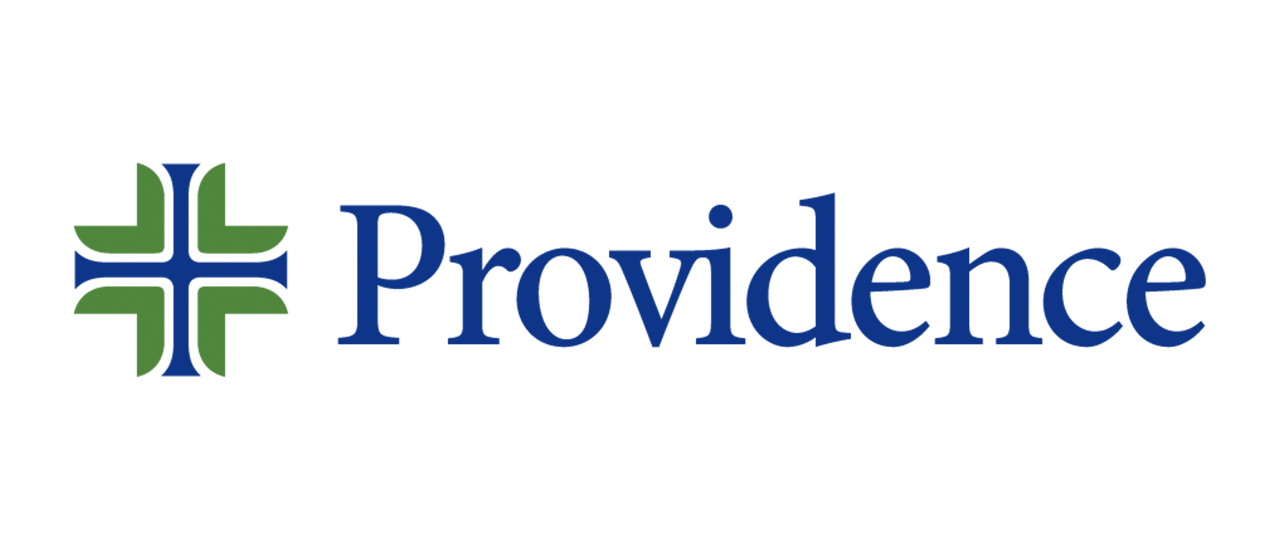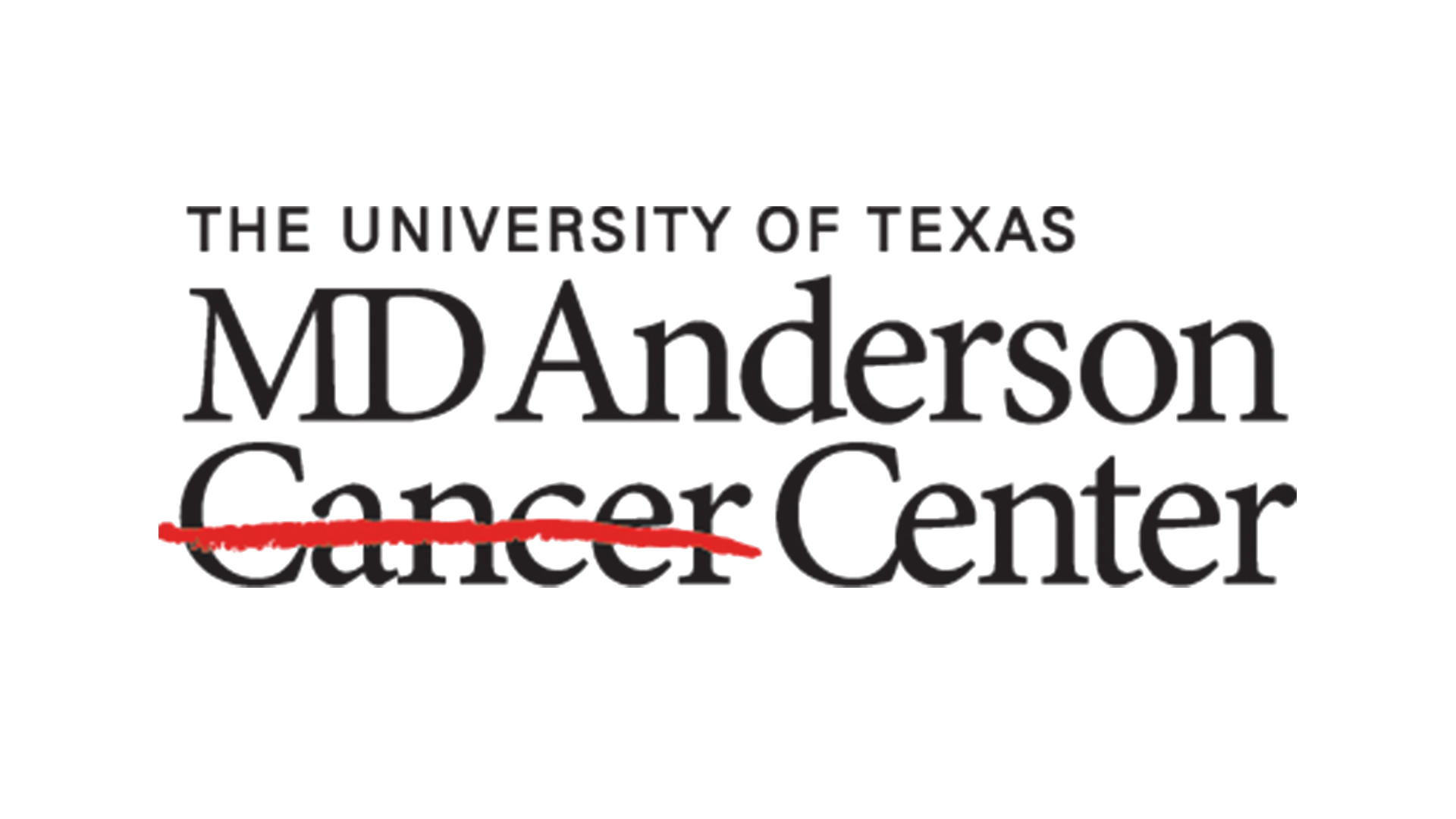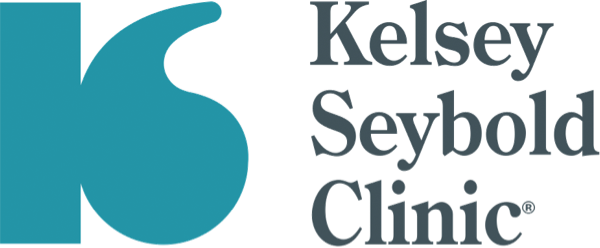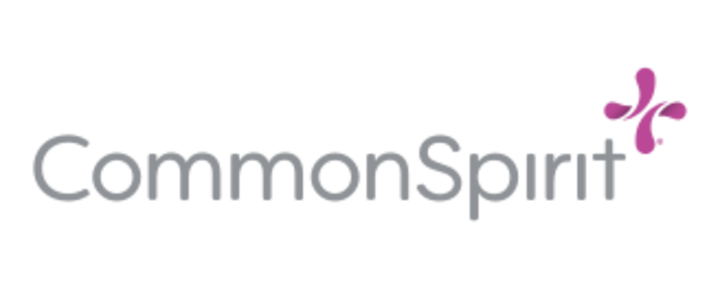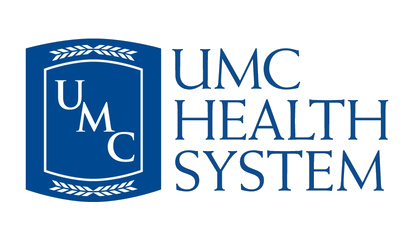A Conversation with M. Trevor Bennett, MBA, MSN, RN, CNCR
Expert Insights features conversations with healthcare professionals on topics related to innovations, challenges, and opportunities in the rapidly changing field of healthcare supply chain management.
Our guest for this episode is M. Trevor Bennett, MBA, MSN, RN, CNCR. Mr. Bennett currently holds two titles with Central Puget Sound Providence Swedish. He is the Associate Vice President of Operations as well as the Executive Director of Surgical Interventional Services. Our wide-ranging discussion includes his views on building and maintaining culture amid the challenges of a pandemic, how experience in the military can be applied to healthcare management, and the importance of data in driving improvements in patient care, team morale, and hospital efficiency.
The transcript and video have been lightly edited for clarity and brevity.
Ternio News: My guest today is Trevor Bennett, currently the Associate Vice President of Operations Central Puget Sound, Providence, Swedish. That’s a lot to fit on a business card, Trevor. Did I get all that right?
Trevor Bennett: You did. So yeah, a little bit of background. Currently [I am] the Associate Vice President of Operations Central Puget Sound, Providence Swedish, as you said. I’ve been in that role now almost 8 weeks. Previously, — and currently — also the Executive Director of Surgical Interventional Services for Providence, Swedish Central Puget Sound as well, which is why I came to Swedish to begin with, in what we are now referring to as “legacy” Swedish from the University of Rochester, in New York, where I was the Director of Nursing for Perioperative Services. Previously, I was the Senior Director of Surgical Services for HCA, Mountain Division with 11 hospitals from Anchorage, Alaska to Southern Utah, and where I started my leadership career prior to venturing out and ending up where I am today.
Ternio: Okay, now, you also served in the military. You were in the Air Force, correct?
Trevor: I did. I’ve got a unique background. I was active-duty Air Force for 10 years. I was not a nurse, and I was not in healthcare. I was an air traffic controller for my time in the Air Force and had a great career with the Air Force, and loved every little bit of it, until exiting and ending up back in healthcare. Previously to the Air Force, I was in pre-hospital medicine as an EMS personnel and EMT through various ranks. Exiting the Air Force, [I] moved back into health care as a nurse — went off to nursing school — and then moved on and grabbed a couple of master’s degrees and [I’m a] couple of courses away from my doctorate at this point.
Ternio: What did you learn in the Air Force, where you were presumably involved in some team building, and so forth. And what did you learn there that you’re able to apply in your medical career?
Trevor: It’s interesting. Just yesterday I had the same conversation with some individuals around, you know, what were the highs and lows, and I think a lot of us in the service when asked about our time in the service have two things kind of pop into our head. One is, which story we want to tell? You know, is it the good and the bad, or the good the bad, and the ugly? High level, it was the very best thing I ever did for myself and my family. It gave me direction, understanding, compassion, fortitude… I mean you can run down all the verbs and adjectives that it was. The military is very good at developing leaders early on and giving them tools and understanding and direct reports, and the process to guide and mentor, and on both ends — to be mentored and mentor across the organization — from the time you walk in the door and in that environment until the day you leave. The other thing that the Air force taught me and is really kind of solidified that I’m very happy that I have and understand is that all the good times and the bad will pass, one way, or another. Right? that it’s a time to just kind of reflect and understand that it doesn’t matter how good it is. It’s not always going to stay there. And it doesn’t matter how bad it is. It’s not gonna stay there. It’s a very difficult time to be in healthcare right now. There are many headwinds that we have never faced and it’s… you know, I mention mostly often jokingly, but I’m very serious about because people come to come to us as leaders and ask, “Where are we going?”, “Why?”, and “What’s going on?” “Are we going to be okay?” And my response is, you know, I apologize. This is my first pandemic. It’s my first national staffing crisis. There wasn’t a textbook. I don’t have all the answers. Then we’re figuring it out as a group with the best understanding of tools and the answers and reports and everything else that we’re scrambling to compile to get the best possible answers that we can in an environment that none of us have ever lived through. But if I base, you know, 20 years of leadership experience in that in that realm, it tells me that it’s not always gonna be like this and somewhere, some way, we will figure our way out of this. Is it going to be longer and harder than we probably want it to be? I do believe that as well, but I do think that there is a solution someday that we will find, and we will get back to where health care is enjoyable, and we are able to return the care and compassion to our patients that all of us really in this field, entered to do it, to begin with.
Ternio: Specifically in your role, then, what are your roles and responsibilities as Associate Vice President of Operations there? Talk to me a little bit about that, and the current challenges that we face in regard to that particular role.
What we’re all after is market share, right? Our ability to capture and be better than anybody else at “X”, whatever that may be… How do we capture market share … with the ability to standardize our care model and purchasing power… — while maintaining culture.
Trevor: I wish I had a one-liner that I could give, right? My job as it stands right now is the bottom of every job description bullet, which is “other duties as assigned”. But I think overall right from the AVP role for operations, I think you can sum that down as you look at what an operations officer’s role is, which is “implementing strategic vision and direction”. I mean that’s the big one liner that, if you know you say okay, what is it? You know what Providence is trying to do? What is Puget Sound trying to do? What is Central trying to do? And how do I affect implementing that strategy across every site in an effective way? Right? Get everybody rowing in the same direction. With my surgical job, it’s very volume-based and based in systems – systems thinking. I’ve had that role a couple of times, and this is no different than those with its own unique challenges and lack of availability, and being stretched across 5 campuses, and, you know, 188 operating rooms…and in procedure suites… I mean you add all that together. You never have enough time. So how do you transition both of those jobs into one single thing? And the reality is, is what we’re all after is market share, right? Our ability to capture and be better than anybody else at “X”, whatever that may be. Whether it be general surgery, hysterectomy, spine, … you know… neuro… I mean I can run down… transplant, right all of the services that we do here. And how do we first maintain, and then how do we capture market share inside of that role with the ability to standardize our care model and purchasing power? And I think we’ll probably get to some of that — while maintaining culture. It’s a big piece of my role. And people choose to work at one hospital over another, even in the same system, for very unique reasons. Right? I have a hospital, Cherry Hill that’s neuro/spine. The nurses that have chosen to work there, and staff in general have chosen to do hearts and heads, and spine, right? You may work at another location that’s very ambulatory based, and that’s the model in the patient population that you’ve chosen to work with. So, while I think it’s very important to standardize as much as absolutely possible from an operational standpoint culture, I think, needs to be protected in every possible way at the specific site that you’re working at. Each team’s dynamic is very different. So I think overall, that’s probably the best summarization I can give for what I’m doing at Providence Swedish today.
Ternio: You mentioned culture a number of times in that brief answer that you just gave, and I would imagine — in this lingering pandemic era where you have tremendous problems with morale that affect recruitment and retention of employees — I would imagine culture is really important right now.
Trevor: Culture is the hardest thing in the world to maintain. Building culture, I found — not gonna say it’s easy because it’s not — building culture is easier than maintaining. Declining culture is the easiest thing in the world, right? It’s easy to lose it in a very quick way. I just had a discussion with some executive leaders yesterday about this very topic. I think in a way, COVID, you know the pandemic, whatever we want to call it, for the last 2 years, the biggest impact that I see from not only as an executive leader, but as a nurse, by background, is the loss of belonging. We met many times, for many reasons. We had babies, showers, we had potlucks, we had dinners, we had after-hours, and we had drinks. We had …right? That was a very normal and actually sought-after reason to enter the healthcare career field, is this team dynamic and the connections between our providers and our other staff and our ancillary individuals, and the ability to build these teams and get to know people on a very personal level about their families and their kids and their spouses, and significant other, and in all of that. And all of a sudden COVID comes along, and we find this new term “socially distanced” being every part of our life. And not only in the workforce, but in our home lives, and our teams became very small, and who we let into our lives… You know we think of COVID differently today than in March of 2020. But a COVID diagnosis in March and April of 2020 was a death sentence. That was the perception of it. We lose some of that now that we’re 30 months into this. But at the same time that took a lot away from who we are as individuals, and the reasons that we came to work, and got through the hard days with really difficult patients and families and tragic diagnoses and outcomes that hit close to home on it on a daily basis. For many of our caregivers, what stood us up was the connection with our peers. And we’ve taken that away from people with this process. And so, one of the things that I really would love to see come back in a very quick way, is the reconnecting with individuals and each other as a team and bringing some of this back while also recognizing that COVID is still real, and people are still struggling with it on many levels, both personally and professionally.
And then the stratification of risk, right? Everybody’s not in the same risk stratification category. And I don’t mean that by the outcome of the patient, but some people are very risk-averse like, “Oh, COVID is still a death sentence”, and some people are like “This was a farce from the get-go, you’re all ridiculous”, and there’s that spectrum. But we also need to respect from an employment standpoint, that each person is heard and respected in their own way. To be able to come to work and be safe. So, it’s an incredible dynamic that obviously, you know, I don’t think anybody’s figured it out nationwide yet. But I do know that it has impacted our ability to be successful as a team and find belonging inside of our environment. That is complex and messy sometimes.
Ternio: Now, aside from rebuilding and reconstitution reconstituting that social structure that’s so important which is such an important element of the culture what are the other operational challenges that you face … and opportunities?
Trevor: So, number one, I mean, we just hit on it: staffing. Staffing is an absolute operational challenge in every way which leads to every kind of roadblock and headwind that you can face. We’re in the people business, and if you don’t have people to take care of people, your business model is at risk. That’s what it is. And so I think you know what’s the greatest opportunity is finding unique ways to connect people and find ways to meaningfully recognize people in our environment. And the reality is that COVID hass opened up a lot of remote jobs for people outside of health care and inside of healthcare, which I think has changed the dynamic. I mean, I’d be very hypocritical if I didn’t say that people changing jobs is a norm, right? I left the University of Rochester, which was probably I will say the best job I’ve ever had and probably the best team I’ve ever had. nd at the end of the day I and my family weren’t happy. Then we made a change, right. We came as we came to Seattle, which was closer to home, and reconnected us with our own family. It made us individually think about what we want in our own family relationship with 2 little kids and a grandma and grandpa that could be invested in their lives, right. We made that decision. And so, when nurses resign, as much as it hurts, or providers move across the country and we go, “Why did that happen?”, at the same time I think we need to recognize that a pandemic made us refocus on who we all are as individuals. And that’s opened up the ability to travel nationwide. People said, “Look, why am I working every single day? You know, I want to go see the wonderful places in the country and have somebody else pay for it. You know I have that skill set, and I have the ability to do that.” And that opened agency staffing, which is, you know, leading to a lot of vacancies across the healthcare organization. People have gone into other industries, as we had a booming economy for over 2 years that was completely wide opening commerce, and people were able to pursue careers outside of healthcare. So, opportunity-wise staffing is going to be a unique thing, and I think a lot of individuals are gonna be put in some tough situations to make decisions that we probably thought we were never going to have to make in this space.
My background is as an air traffic controller. It’s how I always get aligned. You know I found this unique coming, as I was, from air traffic control, or in the FAA aviation world, into health care. And then all these people that try to make correlations between the two. Like air traffic safety and all these …you know, airline safety. If there’s a plane crash and why don’t we treat medical like we do plane crashes and deep-dive all those things. And I will say I completely recognize and think we should. But I will also say that humans are complex and different, and the same thing that we do every single day with the diagnosis/treatment does not have the same outcomes. And while Delta 4965 from Seattle to San Francisco travels the same path every single day, and we would love patients to do that, they’re more complex than airplanes and airways. And I think that piece often kind of gets left out when we are thinking about standardizing processes which in all good intent, often leads to workarounds that are unintended because this didn’t work with this person, or this person also has this other comorbidity that changes their trajectory completely different. And while we thought we were heading to San Francisco we’re actually heading to Salt Lake. And healthcare is going to struggle with that.
So the opportunity is, how do we build some systematic thinking, and also understanding that as we, as we care for disease states inside of this space and gain traction and understanding that oftentimes we need parallel universes, to exist, which we have not always done very well. And empower people to make those changes on their own without seeking approval and advice and 45 workarounds to get to a solution that’s best for the patient.
Ternio: The human element that you mentioned there, the complexity of that compared to air traffic control, really resonates with me. There are some aspects of what goes on in a surgical department in a hospital in an OR that probably lend themselves to optimization and standardization more than others. One of the things that’s getting a lot of attention lately is preference cards. Can you talk a little bit about that area and the challenges and opportunities that you might see or might have experienced with regard to that?
Trevor: Yeah, of course. So preference cards are vital to what we do, and I think a lot of people outside of our space have no idea what we are talking about right now. And everybody inside of perioperative services knows exactly what we’re talking about. You know, essentially to make the comparison for anybody that’s on the outside, it’s the flight plan, right? It’s the map of where we’re going and how we’re going to get there. So I think preference cards go in a lot of lanes. As I think about the highs and lows, goods and bads of preference cards, the unique challenges that I think have existed for a long time inside of preference cards is often that pilot — nurse, surgeon … that team — knows exactly how to get there. It’s like driving home from work. However, they’re not always the one in the case. And this is where preference cards become incredibly complex. ‘Cuz I do it every day — I know exactly what I need and I never look at it I don’t need to, but if I am a brand new pilot, or just moved to an area, all of a sudden I need my GPS to be able to get home. And that is where preference cards, I think, get a lot of misunderstanding on both good and bad. Nurses that don’t update them, and nurses that try to follow them — or don’t. And in the need of understanding that maybe it’s just me. And how do I build a map that’s very effective for somebody to follow me up if I do it every day? But also, how do I not add so much on there that I’m adding an increased workload imbalance to somebody that it’s irrelevant? How do I empower them to be successful, but not overwhelm them? And I think that’s a unique piece of that puzzle, when I think of preference cards and what we’ve done for years, and how we manage the unique challenges. I think it comes down to, you know, GPSing. Like, how do I get home when I do it every day? But if I’m not the one driving, how do I make sure that I get home or my team does, while I’m not there. I think that’s some of the unique challenges around preference cards that exist today.
Ternio: Right. And what are the improvement opportunities in that area that you see? I mean what — for example — Swedish Providence has been using what type of a system for preference card management, up until recently? I mean, talk a little bit about the legacy system that was in place, and what you may or may not be doing differently now.
Trevor: So, we are on the Epic platform. Providence Swedish, as an entire organization, is on the Epic platform, which is a great EMR. It has many, many tools. It’s very powerful. It’s got a data-rich environment. And I think it empowers a lot of people to do exactly what they need to do. There are some gaps in that. While I can pull up your preference card for a …lap pulley, and look through that, I can’t always see exactly what else exists. It’s not always customizable to an exact location, service line, provider, or procedure. And so, a few years ago, I was exposed to PrefConnect. We’ve been doing that work for years on pen and paper in a core outside of an operating room, trying to manage and adjust and understand, what needs to be on here and what doesn’t. And I think the difference behind what that process is and how — I don’t know very many people would argue with me on this — in effect, it was (or is) compared to having, deep rich data that has parameters behind it of utilization. Because before it’s it feels like, “I always use this, I always need that, …oh, every time”. You know, these terms, like “I’ll never use that?”, right, are now quantified, so as we aligned with PrefConnect here at that Prov Swedish, Central, all of a sudden, I had a data-rich environment where I could navigate. As we imported data and started building the database on the back side of this I now could approach my surgeon and say, listen, 92% of the time you’ve never used this. It’s time to take it off the card. Or this is in an open status, and you have opened it a hundred percent of the time and have used it once in the last 22 cases. We need to move this to hold. We’re throwing it away 97% of the time as an increased expense. And so that’s been the I think that the game-changer for me, as I kind of learned about the platforms and the ability to look at this on a different level, is having that data to back up kind of what I’ve always wondered and felt. And then the ability is larger than just a single card. So more than just Dr. X’s lap pulley, now I can look at the entire general surgeons’ platform in what they’re all using. So now I can start to see that — hey! — they use a 3m drape, and these guys use another 1010 drape, and this one’s a net, fourth 1010, right? that comes from MedLine, but it’s in a non-branded …and now all of a sudden I can open a platform and look across the system and say, look, cost per cares per case, all of you are doing the same lab pulley, but some of you are doing it for $700, and some of you are doing it for $3,000. Why? And now it’s visual in a way that I can get in, I can sit down with the surgeon which I have done multiple times, and say, “Look, let’s figure out where it should be”, and I’m not always saying we should have the lowest. Maybe the guy at the bottom needs to come up. You need to maybe add some things, and the guy at the top needs to come down, …or what are we doing? Or is the case complex in a different way than we need to think about when you have “X” right? When we change from San Francisco to Salt Lake, what does that look like and why? What are those products that we should use? And then as I talked about early on, how do we look at what everybody’s using and then go back to our vendors and negotiate better rates? Or align products, and say, look, you don’t need to use this one anymore. And have a vendor build a relationship with us that empowers us to have different measurements of success and buying power and scope and size and leverage that we need to be able to impact the cost that we are charging our patients at the end of the day. So that we can bring our costs down and align with our payers and continue to provide the care in the community that’s needed through a data-rich environment.
So the people that are winning, — winning the world right now — if you kind of look at you know what’s going on worldwide — and I’m not even going to talk about the nation and talk worldwide — the largest companies that are having the most success are all data-rich companies. Every single one of them. There’s not one of them that is not an information company, and you know I’ll even use Tesla because it’s one for me that people are like what’s a car company. Like, I would argue with you that’s a data company that has cameras all over their car with specific GPS, and every time a car turns around the corner of Fourteenth and Main, maps that corner 4,000 different times a day and has probably the best picture of Fourteenth and Main in the world, right? So even if the underlying factor of Tesla is, that it’s a data company, not a car company, which I find unique in its own way and user interface, and everything, when I think of preference cards and healthcare, it’s the same thing. The better the data that we can pull out of the EMR, the better the charging record, the better the patient selection, the better number of ends that we can collect and understand, the better we can provide care to our communities. And that’s the piece that’s always been missing. We have charges for a single patient record. Now we have a database that continues to get better like wine. Over time, the more data we put into it, the better it gets, the cleaner it gets, the better understanding we have, and the more power we have to make decisions that affect the outcome in a positive way. On every front. And that’s been a missing piece inside of every EMR that I’ve been a part of until I was able to align with a preference card company.
Ternio: And how have you found that — bringing this full circle — How’ve you found that that affects or ties in with the culture that you’re trying to build? And furthermore, how does it affect patient care in the long run, which is the big picture goal for everybody in this field, right?
Trevor: Great questions. So, I’ve talked a lot about cost savings and leveraging buying power. The one thing that I will say that I probably appreciate the most about PrefConnect is — I’ll call it the last tile. So, it’s the one I always kind of look at on a dashboard grid. There’s a tile there that shows missing items off of a preference card for the people that are maybe familiar with this platform. And it’s a pretty large number. I mean, you know for us, right? I think the last time I looked at it earlier this week it was $28 million. And people look at that, and they’re like, “Whoa, 28 million dollars!”. But what I will say about that is, “How does it change culture?” That’s 28 million dollars that we are already spending. It’s items that have been identified by the system that says, “Look, you don’t have this on your preference card, and you go get it every single time and bring it to your room. And walks down on the preference card. That means a bunch of things: Supply is not picking it. It’s not being delivered to the room. The nurse is having to run, or the tech is happening to run for that, out into a core or back to the sub sterile and bring that to the room every single time. And it’s money that’s already being spent. That’s frustration. That is the time that you always hear your doc saying “I’ve asked for that on my card 100 times. Why is that not on my card? That should be on my card. I use that every time.” That’s the flip side of the data that I talked about early of that nurse being gone from the bedside in patient care. And having it delivered and ready when we need it. That power of saying, “Look, this isn’t only a tool to pull things off and drive cost down. This is a tool to standardize our workflows and be more efficient from start to finish.” And that’s actually a number that I probably track more than any other number, because in my mind as a nurse that worked in the ORs, that’s the time I was away. Those were the things I didn’t want to run and take away from, and not be prepared, and have a little bit of anxiety as I was working in my room of like, “Oh, I should have known that we needed that.” I’m like “How would I have known I needed that? It’s, not on the card and I don’t work in this room. I always work in ‘X ‘ room”, right? “I know those things inside and out.” And so I find that to be incredibly interesting and I think it’s going to change our culture and the workflows that are around that to empower our nurses that are always are kind of telling me the same things: We need more staff, and I want to have what I need when I need it. Give me the tools to do my job when I’m here. And I think that’s the piece the puzzle that kind of leans right into that. And backing that up and giving them the tools that they need when they need them, based on analytics.
Ternio: Now, preference cards have been an area and continue to be an area for many hospitals — let’s face it — that’s ripe for this type of innovation. Are there other areas in your purview that you’ve looked at, and you’ve gone, “You know, I wish we could innovate in this way” in the same manner. Are there other opportunities that you see, such as that?
Trevor: Off the top of my head. No, but I imagine there’s thousands of them. I mean, this is a unique space that that drives in it. But I mean, I can talk about standardization in a lot of different areas, but as far as analytics that drive such a significant piece of the puzzle, this one’s pretty obvious.
Ternio: Okay. Okay. Well, you’ve been very gracious with your time. Love hearing your comments. Is there anything you else that you’d like to share with us today before we wrap this up?
Trevor: I will say one thing on kind of the preference card alignment, and some success that I’ve seen in the past, that that probably I think some people still struggle with today, and if I could lean in and help it would be the ability to understand that, while nurses are incredibly important in this space, the changing dynamic in the ORs also really needs to include as key stakeholders supply CSTs and surgeons. And while many times you’ll give a card to a surgeon, they have no idea really what’s on there, which I always find unique and interesting, is they have so much to say about preference cards… Having the platform to be able to navigate in an effective way has been a fun change in my career. In leveraging access to our scrub techs that don’t always have access to the EMR or Epic, and to make those updates. You know, scrub nurse or scrub tech — I’m not gonna differentiate between those 2 for this content — but I will say that person knows that supply and that card better than anybody that is associated with that room, period. They touch it in every single way. And to be able to lean into them in unique ways, to empower them to have decision-making capability is powerful. In adjusting these [preference cards] the right way and having an understanding around that. I, as a nurse, didn’t always know those things. I would sit in a room, and I maybe would add a thing or a suture, and I didn’t really know exactly what it was, or what it wasn’t, and outside of the rooms that I worked in all the time, but my scrub techs and my scrub nurses that scrub those cases day-in and day-out, they knew it like the back of their hand. They didn’t always have access. Now they have access. And then, like I said, I’ve been able to sit down and open this — a web based platform — and go through cases with my surgeons piece by piece by piece, line by line by line. They’re like, “Whoa, whoa! Why, am I using that stapler?” you know. “I don’t want to be $200 more. I didn’t know how that — how much that cost. I can certainly use this or that or this.” And so it’s been fun to watch this needle move in an effective way that’s not just kind of like hoping and guessing and then waiting and seeing. It’s been tangible dollars that have been realized on the balance sheet, immediately after the updates and changes have been made. And you can watch that transformation and understanding, and in the success of the ease that’s powered behind it to make the change in recommendation that’s presented. So, I would add, for those that are maybe managing this outside of a specialty charge nurse or a service line leader — not saying, take anything away from them — but I am saying, empower them to add more key stakeholders the visibility behind this, and you will see the success that you’re after.
Ternio: You know I intended to wrap this up, but what you just said leads me to the conclusion that having this, having the access to this type of data, informs these conversations in a way that really helps to build those relationships and kind of rebuild some of that social structure that may have been lost as a result of the pandemic but it’s in a much more directed and focused way. Because now you’re having honest conversations about what’s actually being used — what’s actually not being used — and you’re opening up opportunities for relationship building in the course of that towards a common goal.
Trevor: You got it.
Ternio: Well, hey again, this has been great. Really enjoyed talking to you today. I appreciate your time and hope we can do this again sometime.
Trevor: Thank you.
